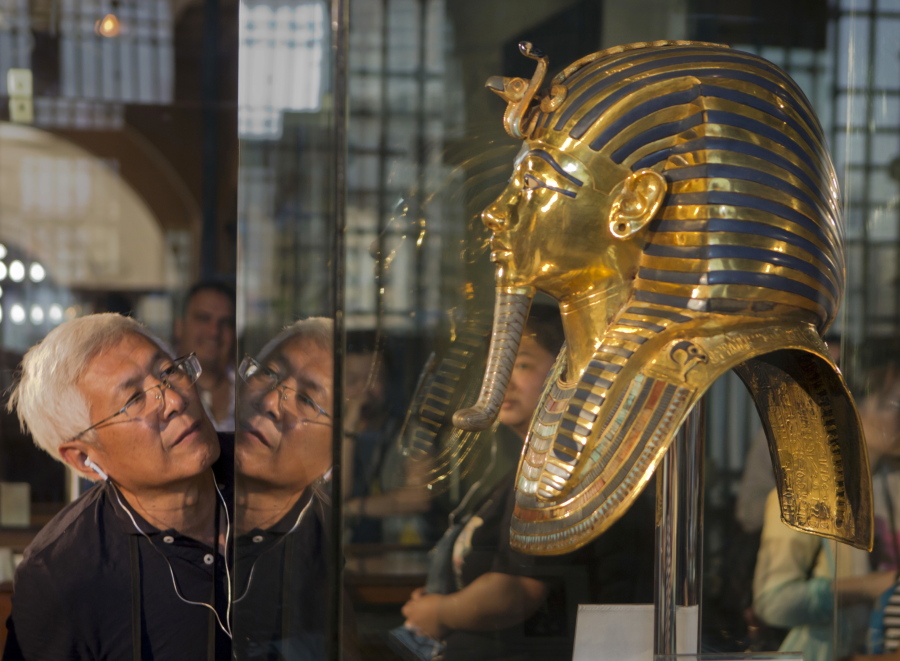CAIRO — The Egyptian Museum in Cairo on Thursday put on display the country’s oldest papyri, which date back 4,500 years and detail the daily life of the pyramid builders.
The items are from the 4th Dynasty of King Khufu, also known as Cheops, for whom the Great Pyramid of Giza was built as a tomb.
Egyptian Antiquities Minister Khaled el-Anany told reporters as the exhibition was unveiled that the papyri were discovered in 2013 by an Egyptian-French mission inside caves in the port of Wadi el-Jarf. The ancient port is 74 miles from the city of Suez.
El-Anany said, the items display are “the oldest” papyri in Egypt. Museum chief Tarek Tawfiq said the papyri depict the daily routine of the workers who transferred building material from the Red Sea port to Giza.
On display are six of the 30 discovered papyri, according to Hussein Abdel-Bassir, another ministry official.
“These show the administrative power and the central nature of the state at the time of Khufu,” he said.
Duties, food
One of the papyri belonged to a senior employee named Marr, who played a role in the building of the pyramid, and it covered three months of his job, providing information about his duties, including transporting rocks through the River Nile and its canals, Abdel-Bassir said.
A second ministry official, Sabah Abdel-Razek, told the state-news agency MENA that other papyri show the distribution of food for workers, including one showing in clear Egyptian hieroglyphs the number of sheep brought in.
The discovery, according to el-Anany, also signaled that Egypt has a treasure of antiquities that are still being discovered.



